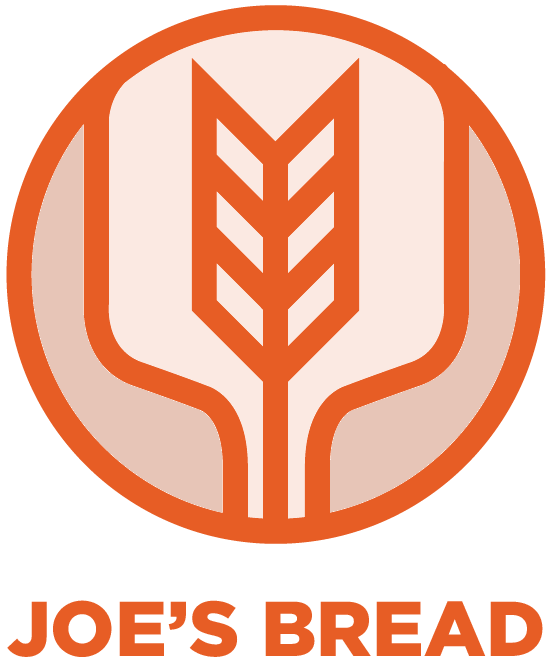Whole Wheat Terminology
Wheat is a grass and its seed is what's made into flour. That seed contains a protective outer shell called bran, a sprouting embryo called germ, and a nutrient layer called endosperm. White flour has the bran germ removed, while wheat flour still contains bran and germ.
Sounds simple, right? Well, there is a major terminology problem in the US. Whole wheat refers to any flour that contains some of the bran and germ. Some whole wheats contains just 20% of the original bran and germ, while others contain 40% or 100%. These different "whole wheats" are completely different products – both in taste and in nutrition.
At Joe's Bread, all wheat flour is "whole wheat", meaning some portion of the bran and germ is included. Among bakers, this is called "high extraction flour". Sifting flour to 20-40% of its original bran and most of its original germ makes for a well balanced bread. The bran is high in insoluble fiber. Insoluble fiber is a nutrient most people need more of. However, wheat is a hardy grain and the seed has more fiber than most other whole grains. Nutition usually requires balance, and too much fiber can make digestion difficult and create gas. The germ is a great source of nutition, flavor, and enzymes. These enzymes, with a bit of patience, make the bran and endosperm more flavorful and more digestible. However, germ is prone to rancity, so it is best to eat whole wheat breads if they are made from freshly milled flours. All products at Joe's Bread are made from fresh flour thanks to our partners at The Mill at Janie's Farm and our in-house grain mill.
Whole wheat bread containing 100% of the bran and germ may also be termed whole grain or wholemeal. It is a denser and makes for a filling meal. All our breads labeled "whole wheat" contain 100% of the bran and germ. While few "whole wheat breads" are in fact wholemeal, we feel this labeling is clearer to consumers looking to make educated and healthful choices.
